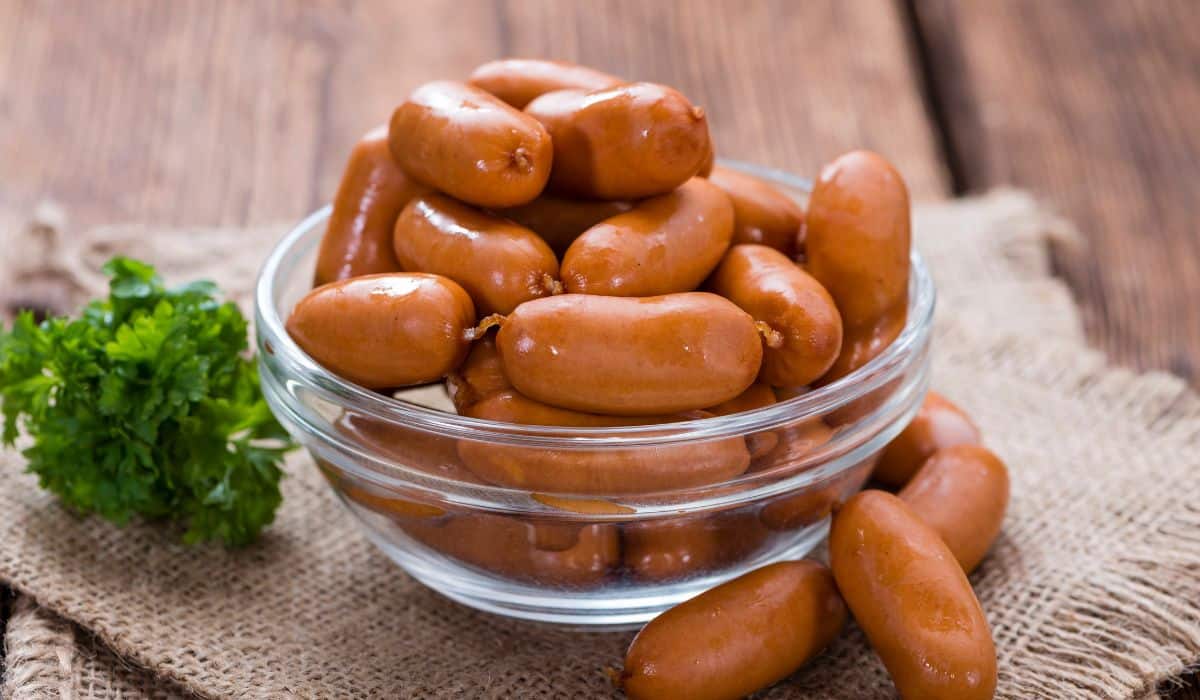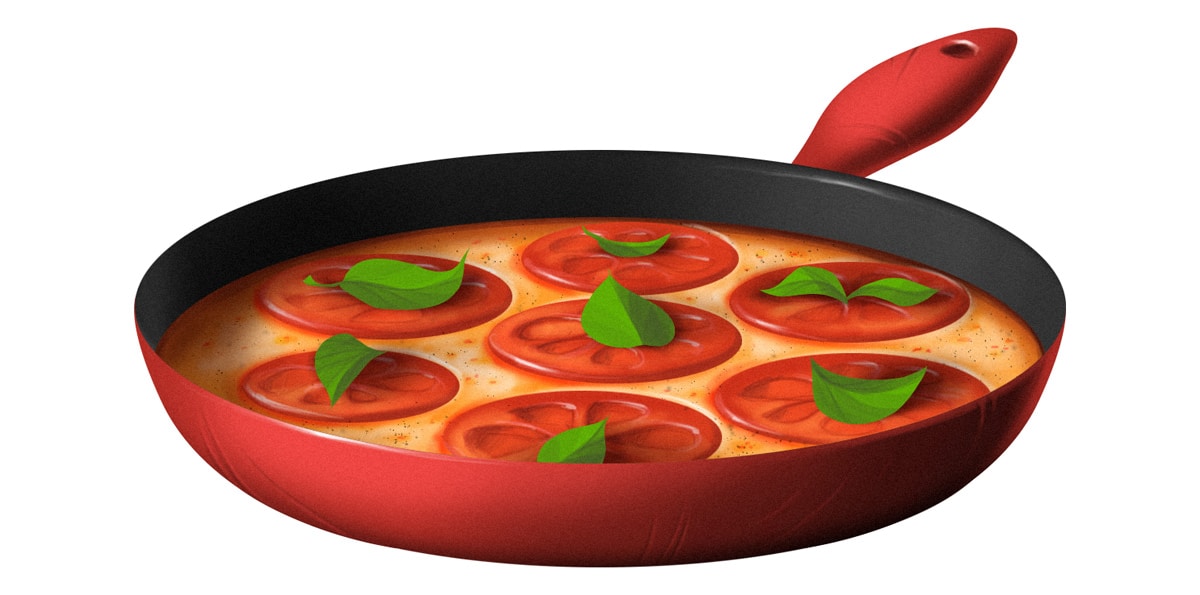
Sausage is a traditional way to preserve meat, and a great option for using up parts of the animal that are perfectly nutritious but not exactly photogenic – nothing goes to waste just because it’s not very appealing to look at on its own. There’s nothing weird or gross about that: those bits are perfectly good to eat and there’s no reason why we should throw them out.
The real problem with sausages isn’t the meat scraps. It’s all the other stuff that gets put in there alongside the meat itself. Sausages are typically slammed as “processed meat,” and it’s true that a lot of grocery-store sausages are more junk than actual animal parts.
On the other hand, it is possible to get good sausages, or even make them yourself with minimal fuss. And if you can fine or make something good, they’re a very convenient way to pep up your stew or substitute for eggs at breakfast time. Here’s what you need to know about finding the good ones, or making them yourself if you’re adventurous.
Types of Sausages
The basic idea of sausage is simple: meat and spices combined, sometimes with fat or fruit, typically in some kind of casing to hold it all together. Sausages come in an endless number of regional varieties and specializations, but here’s a very basic overview of three different types:
- Fresh or raw sausage: ground meat, fat, and spices that have been mixed but not cured or cooked (the meat is still raw). It’s typically sold in casings, but you can also buy fresh sausage meat in patties or just loose like any other ground meat. This is the most basic and versatile form of sausage, and the easiest to make yourself.
- Cooked sausage: basically fresh sausage that’s been cooked so all you have to do is reheat it. Like fresh sausage, it comes in links or patties (not typically loose). These are convenient if you like to save on cooking time.
- Cured, Dry, or Summer Sausage: sausages that have been smoked and/or fermented before they get to you. These are stable at room temperature, so they’re perfect for long commutes, traveling, hiking, or other adventures that call for a ready supply of high-quality protein. You can DIY these, but they’re more of a project and require some fancy equipment.
All of the above can be Paleo, if they don’t contain any monkey business in the ingredients list. Here’s what to look out for:
Casings
Traditionally, sausage casings are made from the intestines of the animal (remember how it’s all about using every part of the carcass? That really does mean every part!). If you see sausages “in a pork casing” or something similar, that’s what it means.
Animal intestines (“pork casing,” “lamb casing,” “beef casing,” etc.) are the casings to look for. They taste the best, and generally indicate a high-quality sausage overall. The companies that run giant industrial production lines have no patience for natural casings because they don’t come in standardized sizes, but you probably don’t want to eat sausages from those factories anyway.
You can also buy casings made from collagen. These are probably fine, especially for hard sausages where you don’t actually eat the casing itself, but go for animal casings if you can. Collagen is a protein isolated from animal foods, and it’s actually very good for you – it’s the same protein that makes bone broth so healthy. Collagen casings are made from animal hides. The hides are ground up and then treated with acidic and alkaline materials to extract the collagen and give it the right texture, and sometimes vegetable fiber is added. Then the collagen is formed into the shape of a casing. That doesn’t sound bad, except that sometimes the collagen is treated with other things as well, and there’s really no way to know since all you see on the ingredients label is “collagen casing.”
Casings are sometimes made from cellulose as well, but cellulose casings are typically inedible and they’re removed before the final sausage is sold, so you don’t really need to worry about what’s in them. Avoid plastic casings. Plastic is not food.
Filling
Good sausages should be stuffed with some combination of meat, fat, salt, and spices. Optionally, they may have a sweetener (e.g. maple syrup in a maple breakfast sausage), other animal ingredients (e.g. blood in blood sausage), or fruit. Good sausages do not need cornstarch, flour of any kind, any kind of gum, breadcrumbs, texturized vegetable protein…you get the idea.
The only way to figure this one out is to take a very critical eye to the ingredients list. Many health-food or organic grocery stores carry reasonably junk-free sausages. But if you can’t find any, there is another option: making your own.
Making your Own Sausage: Not Actually That Hard.
One easy way to make sure everything in your sausage is completely Paleo is to simply make it yourself. There are two ways to do this: the fancy way and the easy way.
- The fancy way: buy a sausage stuffer and casings, look up a recipe for your favorite kind of links, and let your inner DIY food nerd go wild. With this setup, you can make any kind of sausage you want (raw, smoked, cured or fermented, cooked…) and package it up to be very attractive.
Unfortunately, the fancy way requires you to actually buy a sausage stuffer, which can get pricey, and dedicate a significant amount of time to the project. If that sounds like a total pipe dream, there’s also the easy way.

- The easy way: forget about the casings and focus on sausage patties and raw sausage meat for use in other recipes.
This method doesn’t require any special equipment and it barely takes any time. The cons: it doesn’t look as pretty, and there’s no way to do fermented or cured sausages. You won’t be able to make anything that will keep at room temperature. But if you’re looking for something like breakfast sausage, or if you just want sausage crumbles for a frittata or something, you can get exactly the same taste without any junk!
A few recipes for Paleo-friendly sausages:
- (Fancy): Homemade Italian and Chorizo Sausage (Nom Nom Paleo)
- (Fancy): Sheboygan-Style Bratwurst (Food 52) – replace the beer with cider or another Paleo-friendly poaching liquid.
- (Easy): Breakfast Sausages (Primal Palate)
- (Easy): Homemade Beef Sausage (Once a Month Meals)
- (Easy): Christina’s Turkey Breakfast Sausage (AIP Paleo)
Use your loose sausage in patties, or in recipes like soups, chilis, and frittatas: it’s an easy and delicious way to add flavor and variety to the meal rotation.
Summing it Up
There’s nothing wrong with the traditional model of sausage. Meat is good for you and spices are good for you; they don’t magically become unhealthy when they’re stuffed inside a perfectly nutritious animal part and eaten as sausage links. In fact, sausage is an easy way to get all the health benefits of the less-appealing parts of the animal and avoid wasting food.
If you buy sausage from a farmer, a good butcher, or a local supplier, you should be able to get high-quality sausages in an animal casing with no junk ingredients – otherwise, it’s reasonably simple to make your own, and the result is delicious.





Leave a Reply